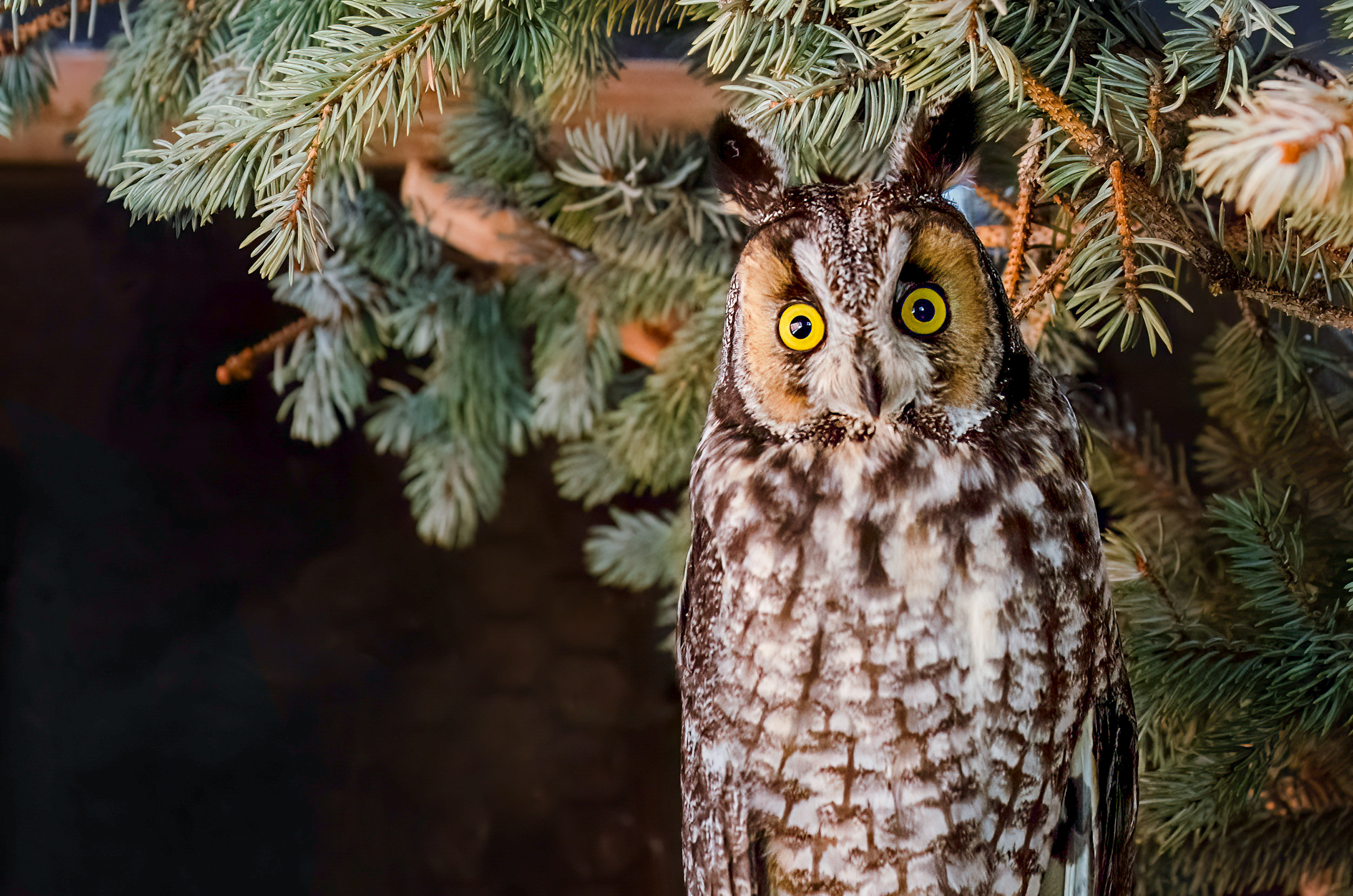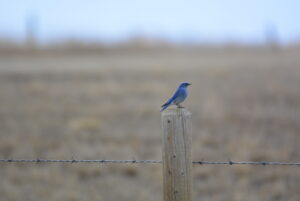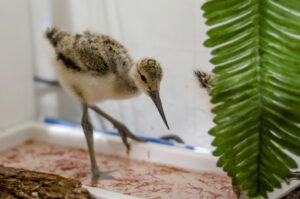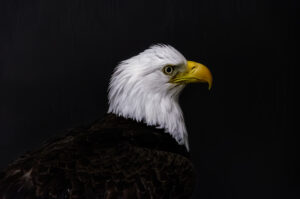by Holly Hastings
In the mystical realm of night, where shadows dance and humans sleep, there exists an animal with eyes that pierce through the darkest abysses. Imagine a world where sight is an art form and vision is a symphony of precision. Let us go on an enchanting journey to understand the nocturnal magic in owls’ eyes.
An owl’s diet consists mainly of mice, voles, and other rodents, often active at night.1 Therefore, most owls are nocturnal, and night is where the hunt begins.2 Not only are owls’ eyes specialized for darkness, but they also have other evolutionary characteristics that enhance their vision:3
- They account for 1-5% of their body weight!4
- Owls have binocular vision (can see objects with both eyes simultaneously) compared to birds with monocular vision (eyes on each side of the head).5
- Binocular vision gives the owl (and other predatory birds such as hawks and eagles) superb depth perception.6
- The owl’s field of view is about 110 degrees, with 70 degrees being binocular vision. By comparison, the human field of view is about 180 degrees, with 140 degrees being binocular. This means that owls can judge distances similar to humans.
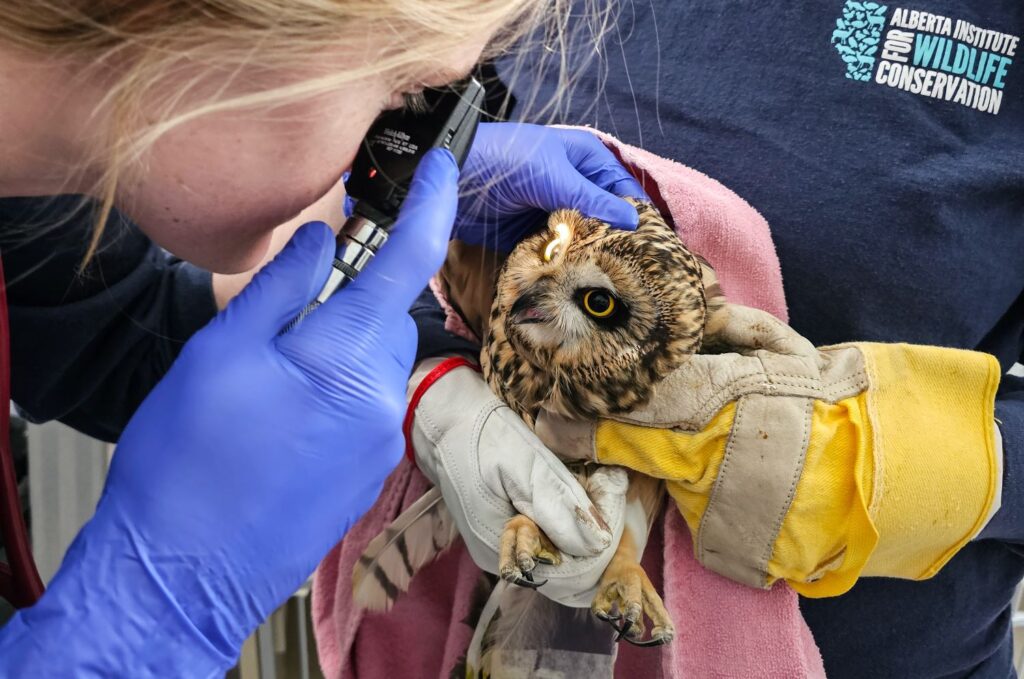
Similar to ours, light enters the owls’ “pupil through the cornea and passes through the lens.”9 Two types of photoreceptors exist in the retina: cone-shaped and rod-shaped.10 Cones are responsible for “color vision and spatial acuteness,” whereas rods are used for low light levels.11 Owl retinas have 30 times more rods than cones, meaning they have excellent night-time vision but can’t see much colour.
One common misconception is that because owls can see so well at night, they can’t see in the day.13 In fact, their specialized eyes are able to adjust to “allow less light in, unlike some other nocturnal animals” that can truly only see in the dark.14
Curiously, if you see an owl in daylight that you believe is sleeping, it could actually be awake but closing part of its eyelids to block out the daylight.15 All birds of prey have three eyelids: the upper eyelid closes completely downwards when blinking, and the lower eyelid closes upwards when the owl sleeps.16 The third eyelid is called the “nictitating membrane,” and it moves horizontally from one corner to the other.17 Most interestingly, this eyelid is translucent (meaning the owl can still see when it is closed) and helps to keep the eye moist.18
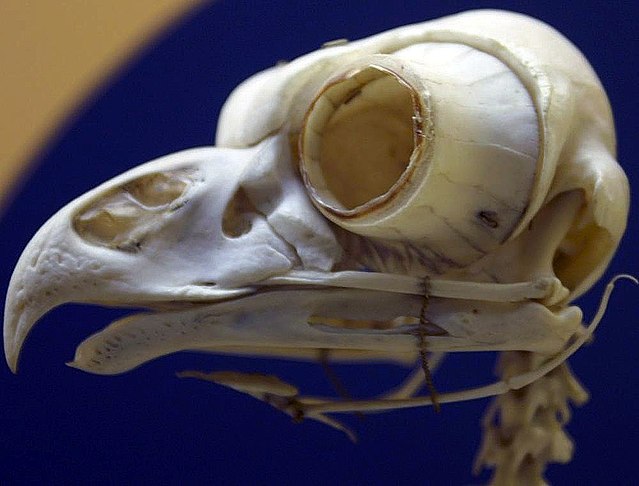
- Locating dead prey once caught
- Finding food brought by its parents
- Removing blood from the beak to prevent sickness.26 But remember, not all owls are nocturnal.
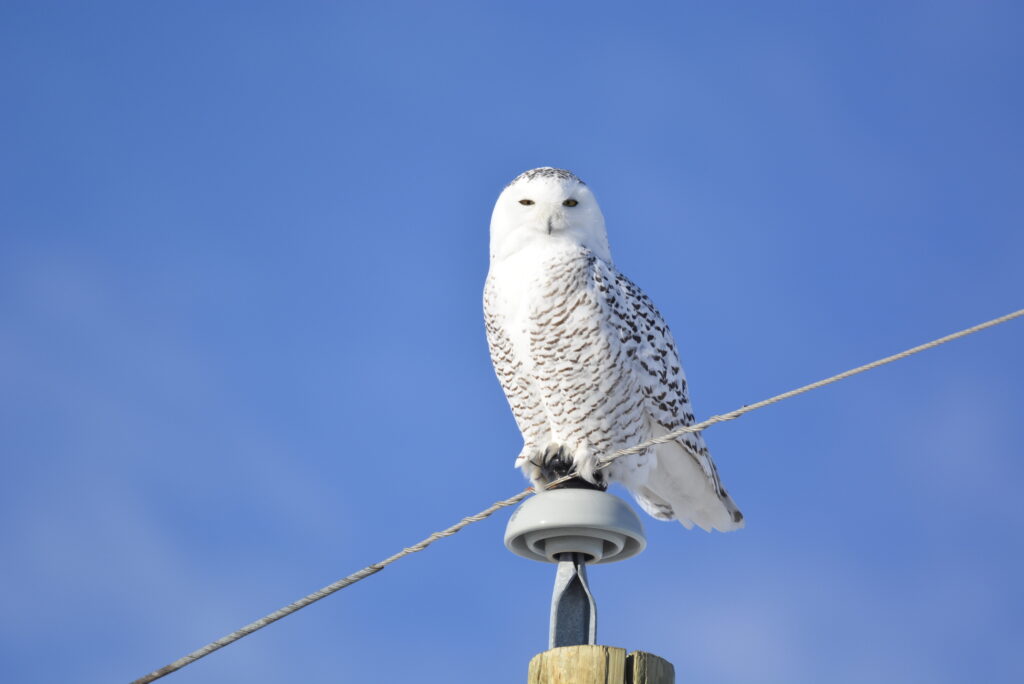
References
- “How Do Owls See In The Dark?” Birdspot.
- “How Do Owls See In The Dark?” Birdspot.
- “How Do Owls See In The Dark?” Birdspot.
- Lewis, Deane. “Owl Eyes & Vision.” The Owl Pages. Last modified June 25, 2015.
- Lewis, Deane. “Owl Eyes & Vision.” The Owl Pages. Last modified June 25, 2015.
- Lewis, Deane. “Owl Eyes & Vision.” The Owl Pages. Last modified June 25, 2015.
- Lewis, Deane. “Owl Eyes & Vision.” The Owl Pages. Last modified June 25, 2015.
- Lewis, Deane. “Owl Eyes & Vision.” The Owl Pages. Last modified June 25, 2015.
- “How Do Owls See In The Dark?” Birdspot.
- “How Do Owls See In The Dark?” Birdspot.
- “How Do Owls See In The Dark?” Birdspot.
- “How Do Owls See In The Dark?” Birdspot.
- “How Do Owls See In The Dark?” Birdspot.
- “How Do Owls See In The Dark?” Birdspot.
- “How Do Owls See In The Dark?” Birdspot.
- “How Do Owls See In The Dark?” Birdspot.
- “How Do Owls See In The Dark?” Birdspot.
- “How Do Owls See In The Dark?” Birdspot.
- Eyes & Vision.” The Owl Pages. Last modified June 25, 2015.
- “How Do Owls See In The Dark?” Birdspot.
- “How Do Owls See In The Dark?” Birdspot.
- “How Do Owls See In The Dark?” Birdspot.
- “How Do Owls See In The Dark?” Birdspot.
- “How Do Owls See In The Dark?” Birdspot.
- “How Do Owls See In The Dark?” Birdspot.
- “How Do Owls See In The Dark?” Birdspot.

